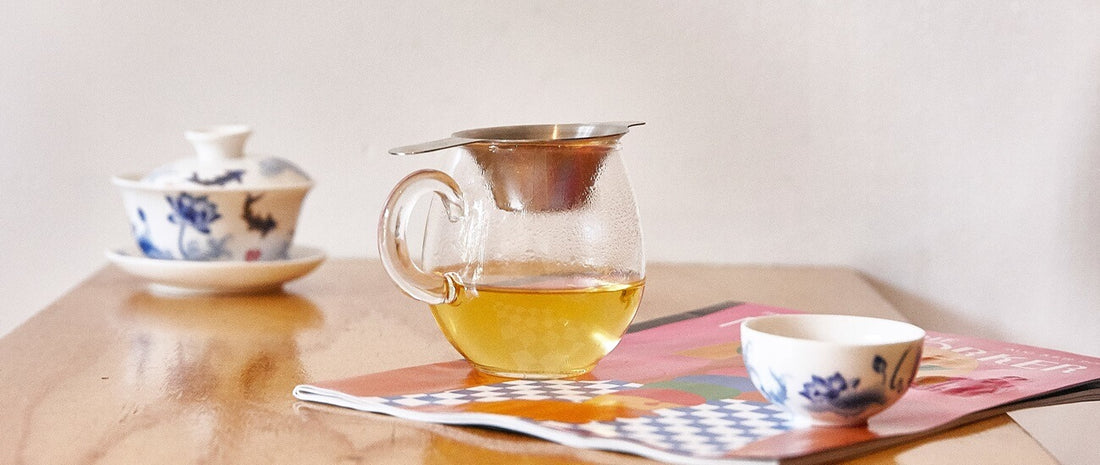
Matcha vs. Green Tea: Understanding the Difference
When we pour a cup of matcha or green tea, we're not just brewing a beverage; we're steeping ourselves in a rich narrative that stretches back centuries. Both matcha and green tea have carved unique paths through history, becoming synonymous with culture, health, and flavor. In this article we explore matcha vs green tea, uncovering the subtleties that define these beloved drinks. From their ancient roots to modern cups, let's look into the world where every leaf tells a story.
Origins and History
The Cultural Significance of Matcha in Japan
Matcha, the vibrant green powder, is steeped in Japanese tradition. Its journey begins in monasteries where monks revered it for meditation support, attributing to it a serene alertness.
The traditional Japanese tea ceremony, known as Chanoyu, further elevates matcha to an art form, symbolizing harmony, respect, purity, and tranquility. This ceremonial approach to matcha tea has transcended time, evolving into a modern cultural emblem that still resonates with the ritualistic and aesthetic values of ancient Japan.
The Historical Roots of Green Tea
In contrast, green tea boasts a more widespread historical journey, tracing back to ancient China. It's said that Emperor Shennong accidentally discovered tea when leaves blew into his boiling water, unveiling a refreshing drink. Green tea then traveled across Asia, adapting to the cultures it touched.
In China, it became a staple, appreciated for its subtle flavor and medicinal properties. As green tea spread, it adapted to regional tastes, but its essence – a connection to nature and health – remained constant.
Processing Techniques
How Matcha is Produced
Matcha's unique characteristics stem from its meticulous production process. The tea bushes are shaded for about 20-30 days before harvest to boost chlorophyll levels, giving matcha its vibrant green hue.
The finest leaves are then handpicked, steamed to halt fermentation, and stone-ground into a fine powder. This careful process preserves the integrity of the leaf, resulting in a powder that's rich in flavor and nutrients – a hallmark of premium matcha tea.
The Processing of Green Tea Leaves
Green tea, on the other hand, undergoes a different process. After harvesting, the leaves are quickly heated – either steamed or pan-fired – to prevent oxidation, retaining the green color and delicate flavor. The leaves are then rolled and dried to various shapes, defining the numerous varieties of green tea.
Each type of green tea, from Sencha to Dragon Well, offers a unique flavor profile, reflecting the diversity within the green tea category.
Nutritional Content and Health Benefits
Matcha's Nutritional Profile
Matcha is a powerhouse of nutrients. Since it's consumed as a whole leaf in powdered form, matcha drinkers ingest all the leaf's benefits. This includes a high concentration of antioxidants, particularly catechins, known for their cancer-fighting properties. Matcha also contains L-theanine, an amino acid that promotes relaxation without drowsiness – a unique characteristic that sets matcha tea apart in the realm of health beverages.
Health Benefits of Green Tea
Green tea is revered for its health benefits, which are largely attributed to its high antioxidant content. These antioxidants, including EGCG (epigallocatechin gallate), are known for reducing inflammation, improving heart health, and aiding weight loss. Regular green tea consumption is linked to a lower risk of several diseases, making it a staple in health-conscious diets.
Flavor Profile and Culinary Uses
Understanding Matcha's Unique Flavor
Matcha's flavor is as rich as its color. It offers a complex profile – a harmonious blend of umami, sweetness, and slight bitterness. This depth of flavor makes matcha tea versatile in culinary uses, transcending beyond cups into cakes, ice creams, and even savory dishes. Its strong flavor profile allows it to maintain its distinct taste even when combined with other ingredients.
The Versatile Flavor of Green Tea
Green tea offers a spectrum of flavors, ranging from grassy and astringent to floral and sweet. This versatility makes it a favorite among tea enthusiasts. Green tea is not only enjoyed as a standalone beverage but also serves as a delicate ingredient in cooking and baking, adding a subtle depth of flavor to dishes.
Preparation and Consumption
Traditional Matcha Preparation
Preparing matcha is a ritual in itself. The traditional method involves sifting a small amount of matcha powder into a bowl, adding hot water, and whisking it with a bamboo whisk until frothy. This ritualistic preparation of matcha tea not only enhances the drinking experience but also connects the drinker to the ceremonial roots of the tea.
Brewing Green Tea for Optimal Flavor
Brewing green tea is an art of precision. The water temperature and steeping time are critical in extracting the perfect flavor. Typically, green tea requires cooler water (around 80°C) and a shorter steeping time compared to other teas. This careful preparation highlights the delicate flavors inherent in green tea leaves.
Caffeine Content and Energy Boost
Comparing the Caffeine in Matcha and Green Tea
When considering matcha vs green tea in terms of caffeine, matcha generally contains more caffeine per cup due to the consumption of whole leaves. However, its pairing with L-theanine provides a sustained energy release, avoiding the caffeine spike and crash often associated with coffee. Green tea, with its lower caffeine content, offers a gentler energy boost, making it a suitable choice for those sensitive to caffeine.
Energy-Boosting Effects
Both matcha and green tea are celebrated for their energy-boosting effects. The caffeine in matcha tea provides a quick and lasting lift, ideal for morning or pre-workout consumption. Green tea, with its more subdued caffeine impact, is perfect for a mid-afternoon pick-me-up, providing a gentle boost without disrupting sleep patterns.
Popular Uses in Modern Culture
Matcha in the Health and Wellness Industry
Matcha has become a star in the health and wellness industry. Its high antioxidant content and energy-boosting properties have made matcha tea a popular choice among health enthusiasts. From matcha lattes to wellness shots, its presence in cafes and health food stores underscores its popularity in modern culture.
Green Tea in Everyday Life
Green tea has seamlessly integrated into daily life, being a staple in many households. Its wide range of health benefits and accessible flavor profile make green tea a popular choice for regular consumption. Whether it's a morning ritual or an afternoon break, green tea has found its place in the everyday rhythm of life.
Environmental Impact of Production
The production of tea, both matcha tea and green tea, has far-reaching effects on the environment. As tea enthusiasts at Bruce Tea & Coffee, we believe it's crucial to understand these impacts. The way tea is grown, harvested, and processed not only affects its taste and quality but also has a significant bearing on the planet's health. In this section, we'll explore the environmental footprint of tea production and the steps being taken to mitigate it.
Sustainable Practices in Matcha Production
Matcha tea sustainability is a growing concern in the tea industry. The unique process of shading the tea plants before harvesting matcha leaves requires additional resources and careful management. This practice, while essential for achieving matcha's distinct flavor and color, can strain the environment if not managed responsibly.
Thankfully, many matcha producers are now embracing sustainable practices. These include using organic farming methods, which eliminate the use of harmful pesticides and fertilizers, and employing water conservation techniques.
Some are also adopting renewable energy sources in the grinding process of matcha leaves, reducing the carbon footprint of production. By choosing matcha from these sustainable sources, consumers can enjoy their favorite brew while supporting eco-friendly practices.
Green Tea and Environmental Sustainability
Similarly, green tea sustainability is an area of focus for tea producers and consumers alike. Traditional green tea farming, especially in regions like China and Japan, is increasingly turning towards sustainable methods. This shift involves practices like crop rotation, organic farming, and the use of natural pest control methods.
These practices not only maintain the health of the soil and local ecosystems but also ensure the long-term viability of tea plantations. Additionally, with the rising demand for organic products, more green tea producers are obtaining organic certifications, which involve strict guidelines on sustainable farming.
As a result, when you sip a cup of green tea, you're not just benefiting from its health properties; you're also potentially contributing to a healthier planet.
In Summary
When it comes to matcha vs green tea, each brew offers a unique experience steeped in history, health, and flavor. Whether you gravitate towards the rich intensity of matcha or the subtle charm of green tea, Bruce Tea & Coffee celebrates the diversity and richness of these teas. We encourage you to explore both, finding your own path in the vibrant world of tea.




